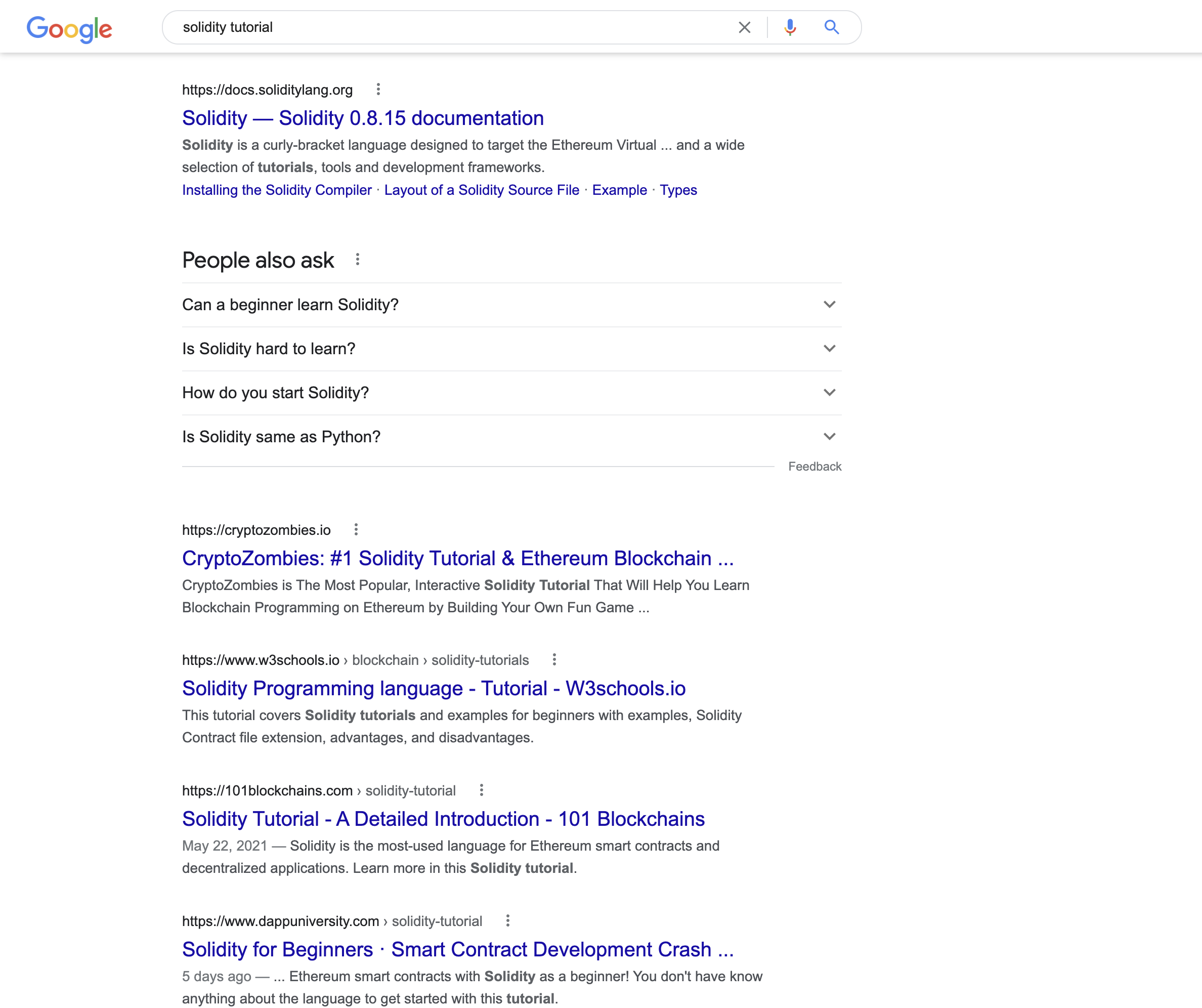Writing for Hashnode - SEO Handbook
We've been working with technical writers for quite some time now. One of the qualities of a successful technical writer is knowing how to optimize their articles for search engines.
There are millions of technical articles out there, but a very small percentage of them have good SEO.
This guide is addressed to the technical writers from the Hashnode Web3 blog, but anyone is free to use it.
This guide is overly simplified and super actionable. Enjoy.
Finding the right keyword
Every article you write can be optimized for a keyword or a group of keywords.
If you plan on writing a technical tutorial on Solidity, you should first make sure that there are people looking for that specific tutorial. You can check out this tutorial on search volume.
Once you've found your keyword or group of keywords, you are ready to start with the basics of SEO.
The Metas and URL

Slug
The general rule with URLs is to keep them short and clear. The URL should be enough for a new user to understand roughly what the article is about.
Don't add determiners in the URL: a, the, an, this, that, these, those.
Ideally, the Slug should include the target keyword.
Meta title
What we want to achieve with our content is to offer actionable content that enables the audience to quickly grasp a concept, process, action, tech, and so on. This has to be reflected in the title as well.
The title also has to tease the element from the article that is most relevant to the topic’s search intent.
So if we write about creating a dev resume and give a step-by-step guide or a checklist, this has to be teased in the title. It helps improve the CTR from search.
A Quick Guide to Creating a Killer Dev Resume + Checklist and Templates

We use the APA capitalization style. We capitalize our titles using this tool. Capitalizing your title doesn't necessarily improve your rankings but it can make your title easier to read and further improve your CTR in search.
Most importantly, make sure your title includes the main SEO keyword.
Meta description
The description has two roles - to be a great teaser for the article that makes people want to click on it and help improve SEO.
To improve SEO, you can mention the main keyword once and the relevant secondary keywords if possible.
If you mention words like checklists, templates, examples, and so on in the titles, make sure you mention them in the description as well. Most often, these are secondary keywords with great search volume.
Plus, people like free resources or examples so it’s a great way to get people to engage with our article.
Your article titles
The title tag is the first interaction the user has with your article.
You have to consider that you are competing for the user’s attention with 10+ other pages in the search result, so you have to make this title compelling.
Here are a few pointers for writing good titles:
Experiment with emojis in the metas. (almost no one does emoji in meta so you stick out)
Keep titles short. (Title tags between 15 to 40 characters have the highest CTR)
Always add your main keyword in the meta title, URL, and meta description ( URLs that contain a keyword have a 45% higher click-through rate)
Internal links
Internal links are a great way to pass page authority to your other articles or articles from the publication. This means that readers (and search engines) will discover more of your content faster, which equals more traffic and better rankings.
A few pointers:
Always look for internal linking opportunities when writing an article or for older ones
The anchor text should describe or tease the contents of the article you are linking to.
Don’t overdo it. The more links you add the more your link equity is diluted.
Embedded Media
All articles should have images embedded in them.
You should break large chunks of text with relevant images, gifs, embedded videos, embedded tweets or any other resources that you find relevant. Make sure that all images have custom Alt tags that accurately describe what the image contains.
This makes for a better reading experience and helps the article rank better.
You can also consider embedding YouTube videos, Twitter threads, code and anything that you might find relevant.
Add FAQs
FAQs are a great way of delivering important information concisely. They are also a perfect opportunity to answer the questions that someone might have on that topic.
There's a super easy way to find those questions. Just go on Google, search for your topic and see if something relevant comes up in the "People also ask" box.

For example, if you plan on writing a guide on getting started with Solidity, you can consider answering these questions.
Start optimizing your article
Of course, this is not an in-depth guide to SEO. These are just a few actionable tips that we use internally for the Hashnode Web3 blog and other content that we write.
If you want to learn more about it, check out more SEO articles written by the Hashnode community.
